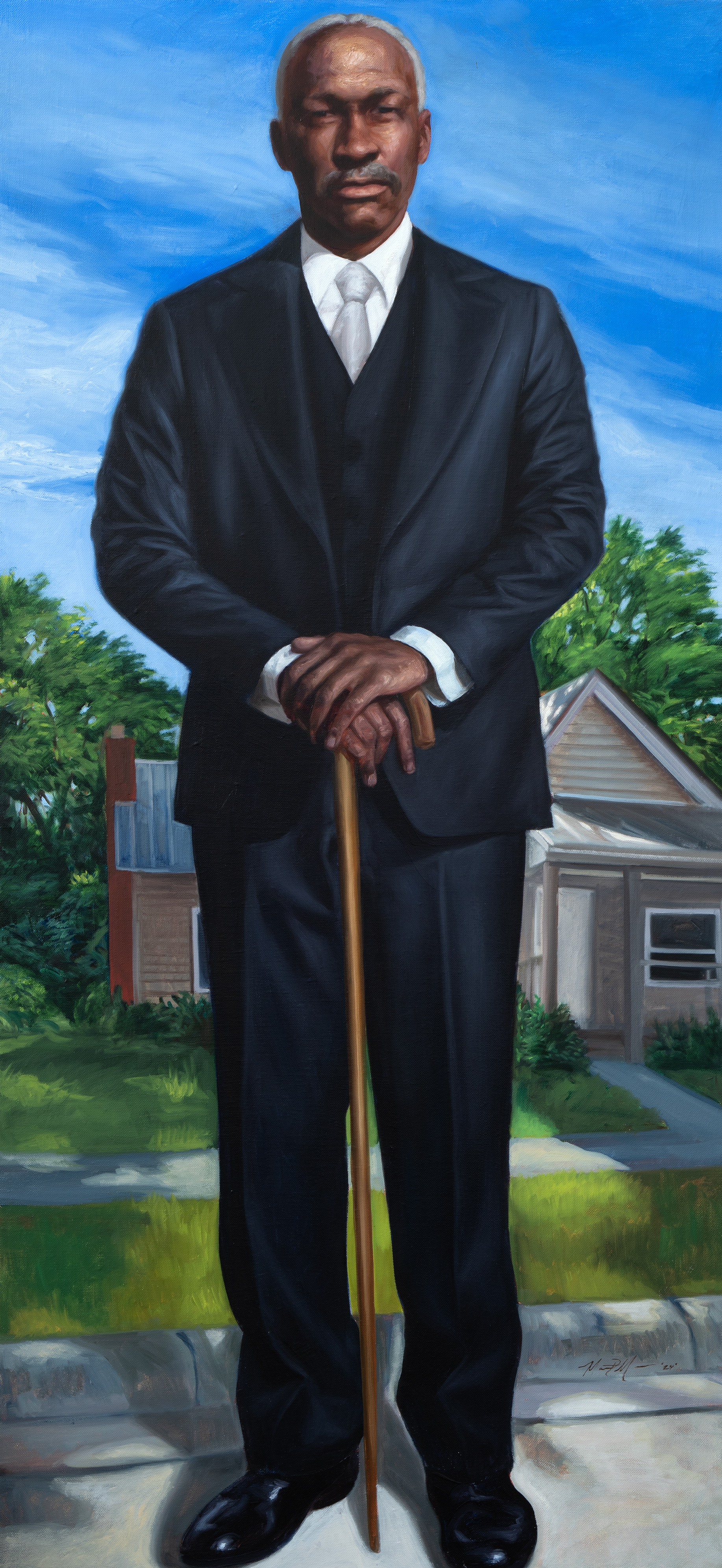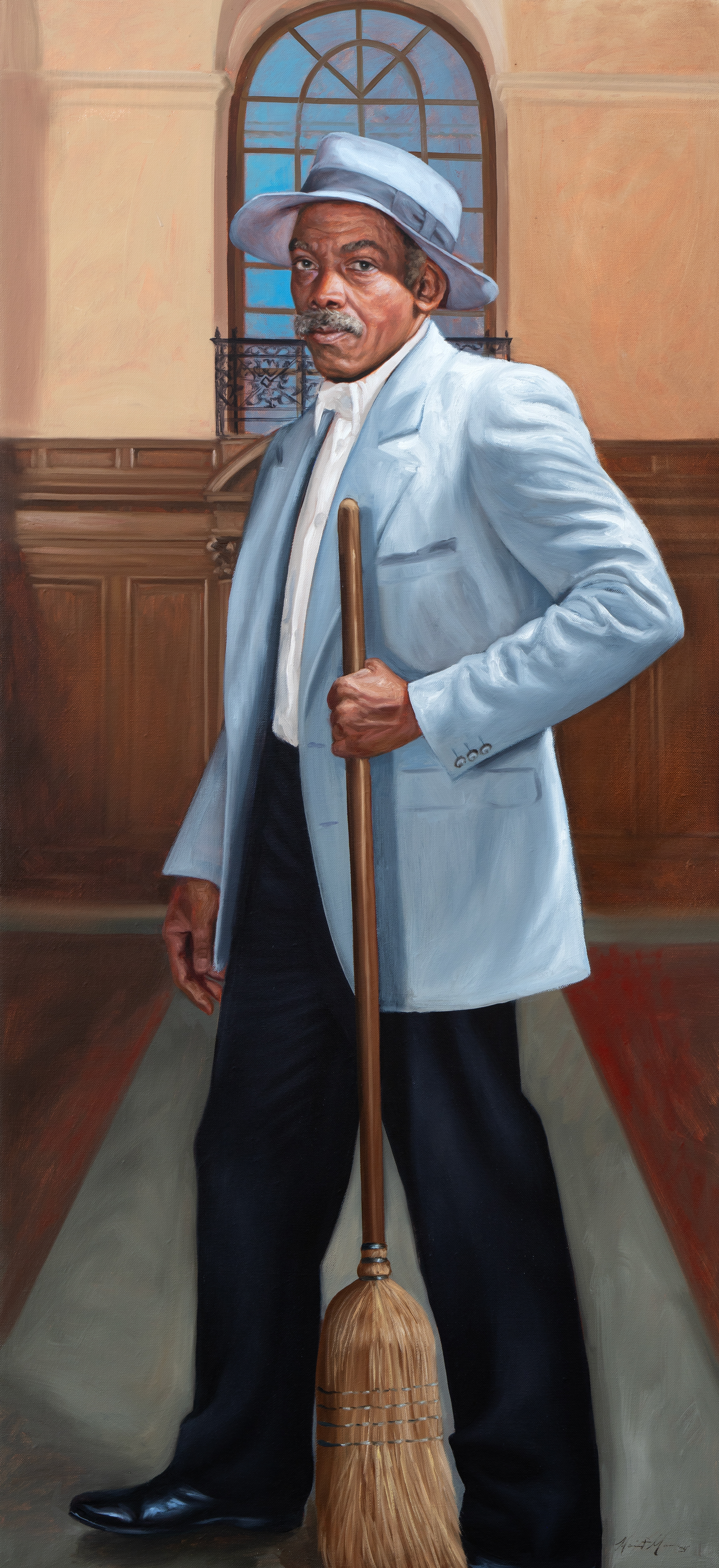Wall Center Ceremony Honors a Family That Helped Build a Community
Wall Family, Walltown residents join Duke in dedication ceremony
Turner was among the nearly 100 Wall family descendants who attended the dedication ceremony.
A gathering in the lobby before the ceremony in the Wall Center dining room took on the atmosphere of a family reunion, where the Wall family, along with former and current residents of the Walltown community, admired the permanent lobby exhibition, read the early history of the Wall family, and posed for photos in front of the portraits.
“Oh, I’m happy, so, so happy,” Annie Vample said.
“This is long overdue,” said Duke alumnus and board of trustees chair Adam Silver, who offered closing remarks at the ceremony. “It comes at a great time with the Centennial, and it’s a turning point in Duke’s relationship with the community for the next century and continuing to build a great relationship.”
Earlier in the week, Wall family member Joel Brown, a reporter with WTVD, talked with Duke President Vincent Price about his family’s legacy. Joel’s father, John Brown, a retired history teacher, attended the dedication ceremony. “I love it,” said John Brown. “Here’s the deal. I’m a Carolina fan. This might make me become a Duke fan.”
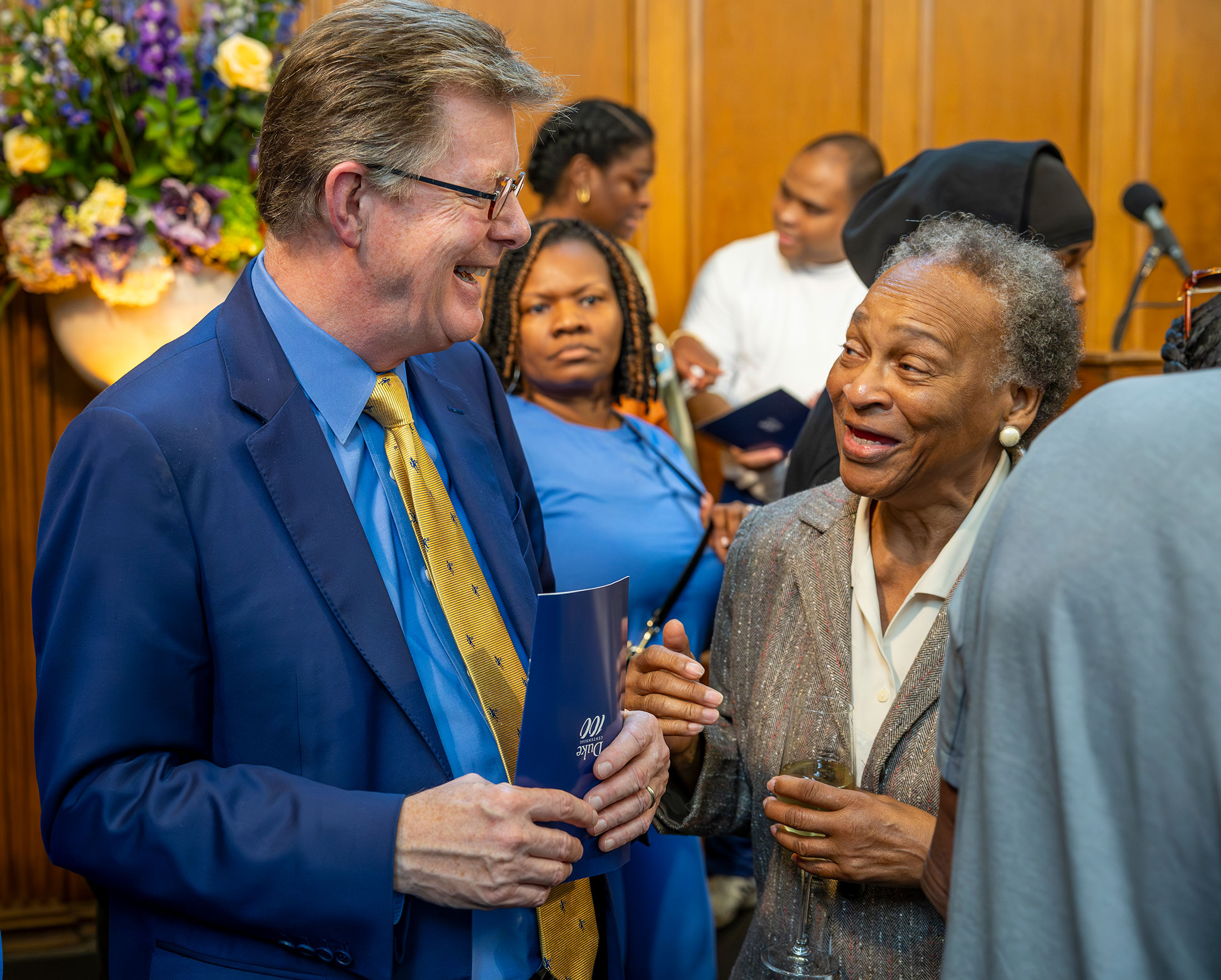
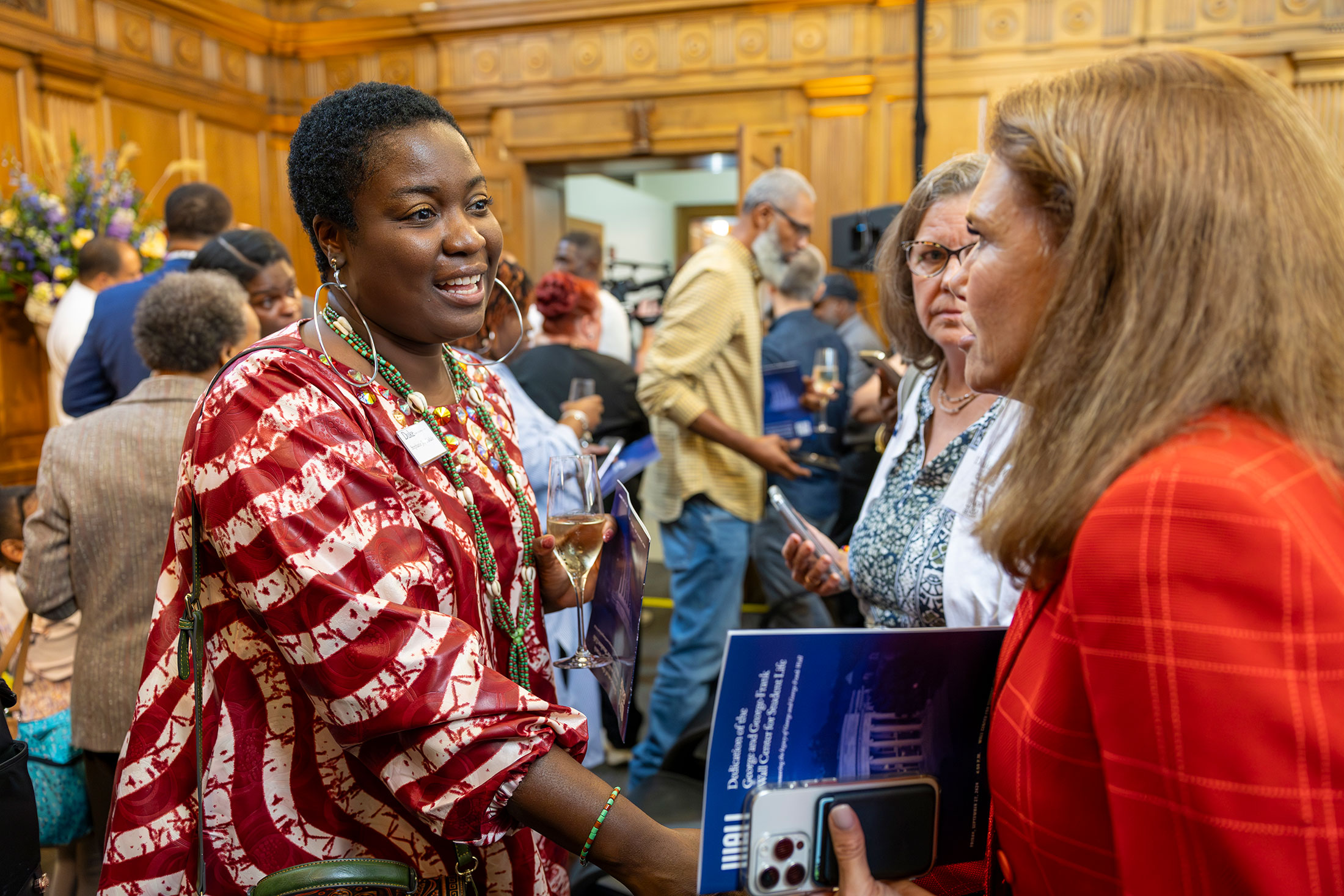
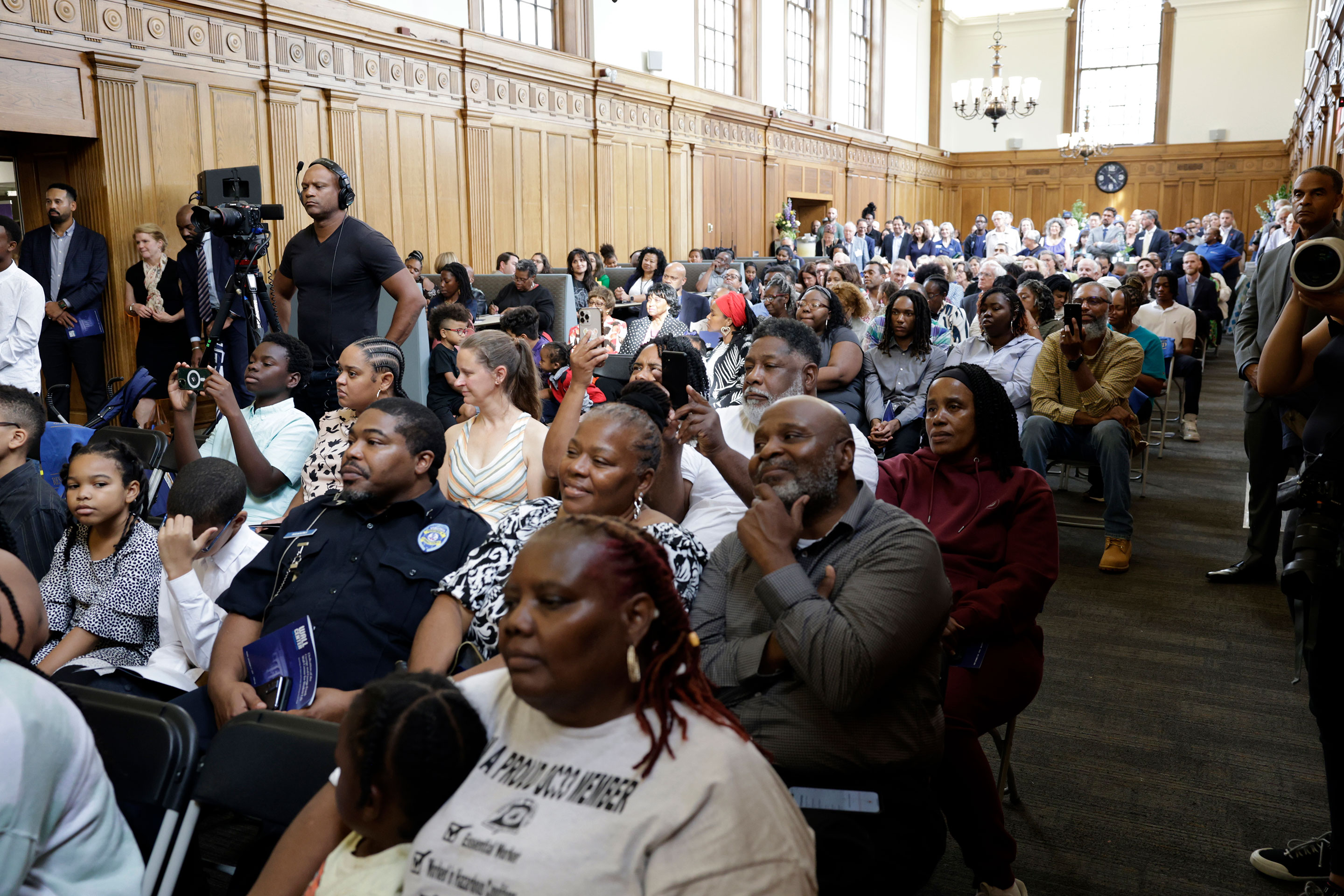
George Wall was born into slavery in 1861 and later worked on the Trinity College campus in Randolph County. After the college moved to Durham, George and Hattie Wall also moved to Durham and he continued to work for Trinity, even as it became Duke University in 1924.
George’s oldest son, George-Frank Wall was born in 1887, helped his father on campus as a child and later worked as a janitor at Duke, where he was well known to the students.
George-Frank Wall left a $100 bequest to Duke in his will that was written more than a decade before the university admitted Black students. He died in 1953.
The renaming of the Wall Center not only honors the father and son, it also recognizes the contributions of their family and other African American workers who have enhanced Duke with their labors and helped to build community both on campus and in Durham.
Previously the East Campus Union, the building is home to the Marketplace and the Trinity Café and serves as the main dining hall for first-year students.
In opening the ceremony, Price said the university’s Board of Trustees voted unanimously in February to approve the renaming of the Wall Center.
Price highlighted the work of the staff of the Wall Center for Student Life, “whose work to prepare and serve thousands of meals each day nourishes our students and enriches our academic community,” he said.
Stephanie Joy Tisdale, George Wall’s great-great-great-granddaughter, began her remarks speaking the West African Yoruba language:
“A ará gbàhun dà?
A ará gbàhun dà?
To ba ṣe
ṣe pá ee ku o
A ará gbàhun dà?”
Where are the ancestors?
Where are the ancestors?
If it is a fact that we never die
Where are the ancestors?
“George Wall is one of millions,” Tisdale said. “He represents one of the millions of human beings of African descent born in captivity, forced to labor against their will, navigating the world as best as possible: all variables considered.
“The land that he procured adjacent to Duke’s campus later became a home to many people who–like him–were attempting to navigate the contradictions of America. The fact that this land continues to be called Walltown almost 120 years later speaks to an aspect of George Wall’s existence that I want to know more about.”
Vanessa Wall Smart, George Wall’s great-great-great granddaughter, recalled the people and places in Walltown that created a tight-knit, self-sufficient community, “for the sake of history, and for the record.”
“In Walltown there was a network, a sense of belonging, love and a safe space for its residents. Whether related by blood or by the boundaries of Club Boulevard to Green Street and Lancaster to Sedgefield [streets], Walltown was family and a reflection of their life’s work,” said Smart, who spent her formative years on the same street where George and Hattie Wall built their home.
“When my parents moved us a few miles north of here, we were always back in Walltown several times a week,” Smart added. “Whether it was social engagements, church services, meal delivery, or just to stop by someone’s house to say hello, Walltown was home.”
A third family member, Durham resident and entrepreneur Talib Graves-Manns, continues the family legacy by being active in the local community, including partnering with Duke’s Office of Durham and Community Affairs.
On his customary walks through Walltown and around East Campus, Graves-Manns said he recalls the commitment the Wall family made to build the community.
“In honor of George Wall and our family’s legacy, we too are committed to building stronger, healthier communities,” he said. ‘I challenge each of you to ask yourself: ‘Am I doing all I can to leave this community better than I found it?’
“Let this be a reminder that your contribution, no matter how big or small, has the power to change lives. What will your legacy be? What is your $100, and where will you invest it?”
